Science
Plain ol' water is out. Hydration supplements are in. But do these top 8 brands really work?

You see them crowding checkout counters at grocery stores — a rainbow of bubble-gum pink, lime green and blueberry packets, slender and upright, like a multicolored chorus line of dancers tempting an impulse purchase. At the gym, they’re dissolved into enormous jugs of cherry-tinted water.
They’re especially prevalent on TikTok. Just search #watertok for a flood of #watergirlies, clutching Stanley tumblers at their #waterstations, which are crammed with neon-bright hydration powders and flavored syrups. #Wateroftheday? How about Strawberry Birthday Cake Water. Or Caramel Apple Sucker Water.

In L.A., water rules everything around us. Drink up, cool off and dive into our stories about hydrating and recreating in the city.
“If your water isn’t turning your mouth blue, you’re apparently hydrating wrong,” one skeptical dietitian observed on TikTok last year.
Hydration supplements in the form of powders, tablets and liquid additives have become a norm among consumers over the last decade, and are more popular than ever. The global electrolyte hydration drinks market was valued at $1.72 billion in 2023, according to Data Bridge Market Research. And it’s growing. The business of boosting one’s H2O is projected to reach $3.26 billion by 2031.
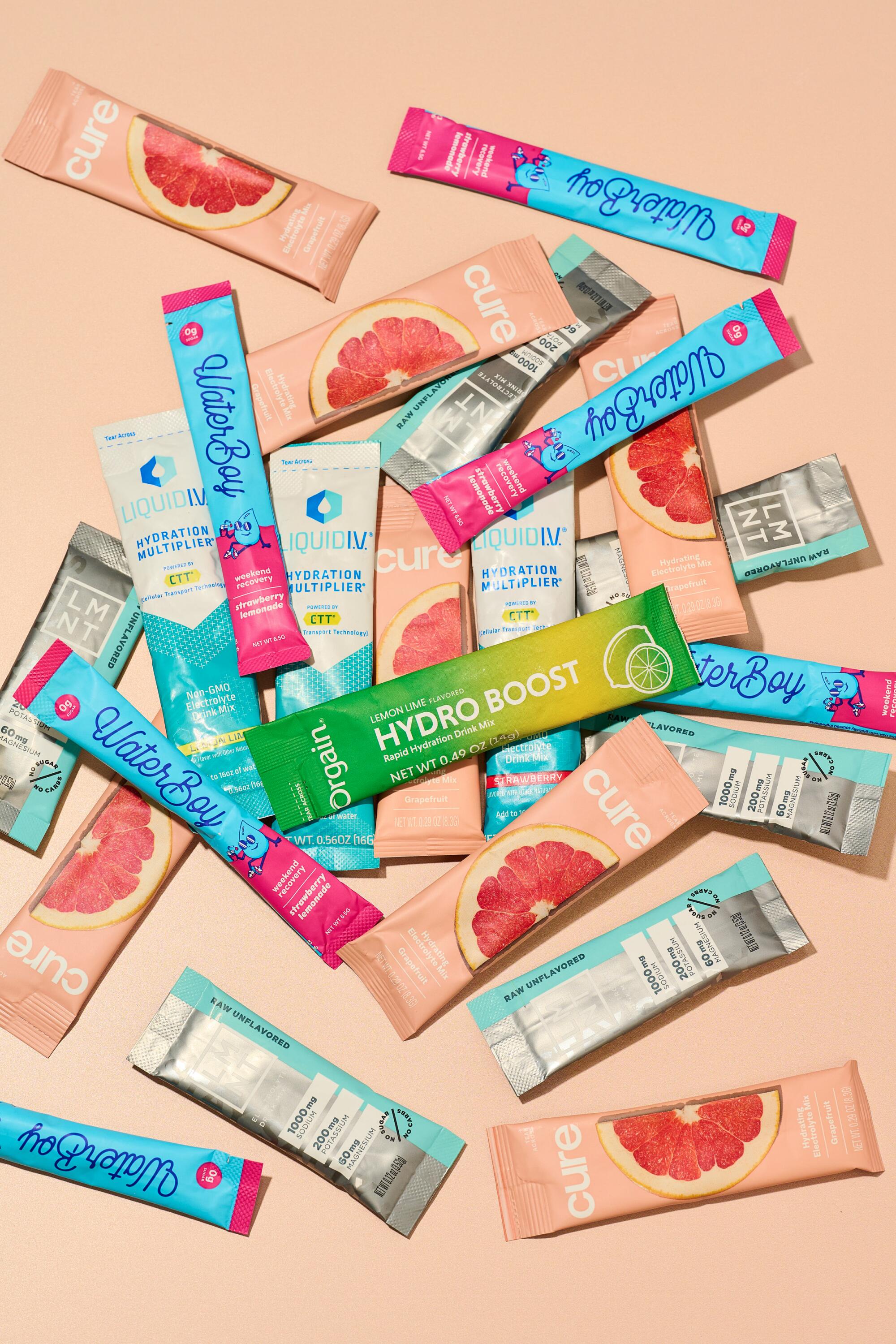
Hydration supplements are sold at most major grocery stores around L.A. The market for these powders has grown in recent years.
Why hydration is important
This bonanza of new hydration products plays to a basic but critical need: More than 50% of people around the globe, including in the U.S., are chronically underhydrated, according to the National Institutes of Health, which cites worldwide surveys. (“Underhydration” refers to people who don’t meet the recommended daily fluid intake, whereas “dehydration” refers to a more severe fluid deficit.)
Those statistics are concerning, considering hydration is the oil to our body’s engine. It aids in muscle repair, digestion, energy and focus. It’s necessary for lubricating joints, regulating body temperature and removing toxins from the body. It carries nutrients to cells and is crucial for hormonal balance, which can affect blood pressure and the menstrual cycle. Our level of hydration also contributes to our hair and skin health.
“Proper hydration keeps every system of the body running smoothly,” says dietitian-nutritionist Vanessa King, a spokesperson for the Academy of Nutrition and Dietetics.
After years of striving to adhere to a 1945 U.S. Food and Nutrition Board recommendation of eight glasses of water a day, it tracks that we’d want to zhuzh up the ritual. (Some studies, however, suggest we need less water daily and that water requirements vary for individuals.) But is there any actual health value to these water additives? Do they aid with hangovers, enhance our workouts or energize us? Or are they simply there to make plain old water taste like a piña colada?
It depends on what product you’re peppering into your Hydro Flask.
“Hydration supplements can replenish you when your fluid status is down — so after workouts, for hangovers or when you’ve been sick,” says Dr. Vijaya Surampudi, an endocrinologist, nutrition specialist and professor at UCLA. “Depending on their composition, some get better absorbed and improve your hydration. Some are just for flavoring and they can have a lot of sugar or artificial coloring — it can be like drinking a soda.”

Hydration supplements can help replenish your body’s fluid status after workouts, colds or when you’re hungover, according to UCLA professor Dr. Vijaya Surampudi.
She notes that because these powders and tablets are categorized as supplements, they aren’t regulated by the U.S. Food and Drug Administration. “So you just have to trust what’s on the label.” (To fill this gap in regulation, some sleuthing social media users have even carved out a niche content genre in which they analyze the ingredients listed on the labels of celebrity-backed supplements.)
What’s in hydration supplements?
More often than not, a hydration powder or tablet includes a mix of four main ingredients: electrolytes (such as sodium, potassium, magnesium and chloride), a carbohydrate (such as glucose), vitamins (typically B vitamins, sometimes C) and amino acids. Depending on their quantity, and how they interact with one another, those ingredients may help hydrate your body more efficiently.
How these ingredients chemically interact with one another directly affects hydration. Water follows sodium for absorption, for example, and sodium molecules travel best with glucose molecules across the lining of the gastrointestinal tract, Surampudi says, so carbohydrates like sugar are not a bad thing in your supplements — they’re actually preferred.
Even so, it’s a delicate balance. A supplement with too much sugar may work against your aim to be healthier.
“The body stores excess sugar for energy later, and that’s stored as fat,” Surampudi says. “And if you drink too much [sugary fluids], that can lead to health complications.”
While sugar and sodium help fuel hydration, those with diabetes or high blood pressure should be careful with hydration supplements, paying attention to their sugar or salt intake.
“Use it with caution and discuss with your healthcare provider,” Surampudi says.
Do we need them?
Hydration supplements aren’t unsafe for most people to take daily if the sugar content is moderate — but they’re often not necessary, says Dr. Christopher Duggan, editor of the American Journal of Clinical Nutrition and a Harvard Medical School professor.
Most adults and children don’t meet daily hydration recommendations, he says, which is currently 13 eight-ounce cups of fluid for healthy men and nine for healthy women, according to the National Academy of Medicine. (Note this recommendation includes all fluids, not just water. And we tend to get 20% of our water intake from food.)
“So if adding a light flavoring gets them to drink more water, that’s probably not a terrible thing,” Duggan said. “But if the expense is high, it’s ultimately not worthwhile. Because unless you’re participating in vigorous exercise or your GI tract doesn’t work normally, water alone is probably an adequate hydration.”
Some hydration supplements even contain ingredients that are not hydrating when consumed in large quantities, such as caffeine. Though caffeine is a diuretic, consuming up to 400 mg of it daily can actually help with hydration, according to the Academy of Nutrition and Dietetics’ King. Other flavored powders contain various B vitamins, which may cause problems in excess.
“B6, if you consume too much of it because you’re getting it elsewhere, there’s a risk for some people of neuropathy, which means damage to the peripheral nerves (which are outside of the brain and spinal cord), and which can cause numbness and tingling, among other things,” Surampudi said.
Surampudi recommends consuming hydration supplements only in moments when your body is especially challenged.
“If there’s a situation where you’re fluid down, or in a high altitude or in an extremely hot climate, that’s where these things can be helpful,” she said.
How 8 top hydration supplement brands perform
So take your hydration boosters with a healthy dose of skepticism. Here’s an analysis of eight hydration supplements — the good, the bad and the meh — according to L.A.-based dietitian Katie Chapmon.
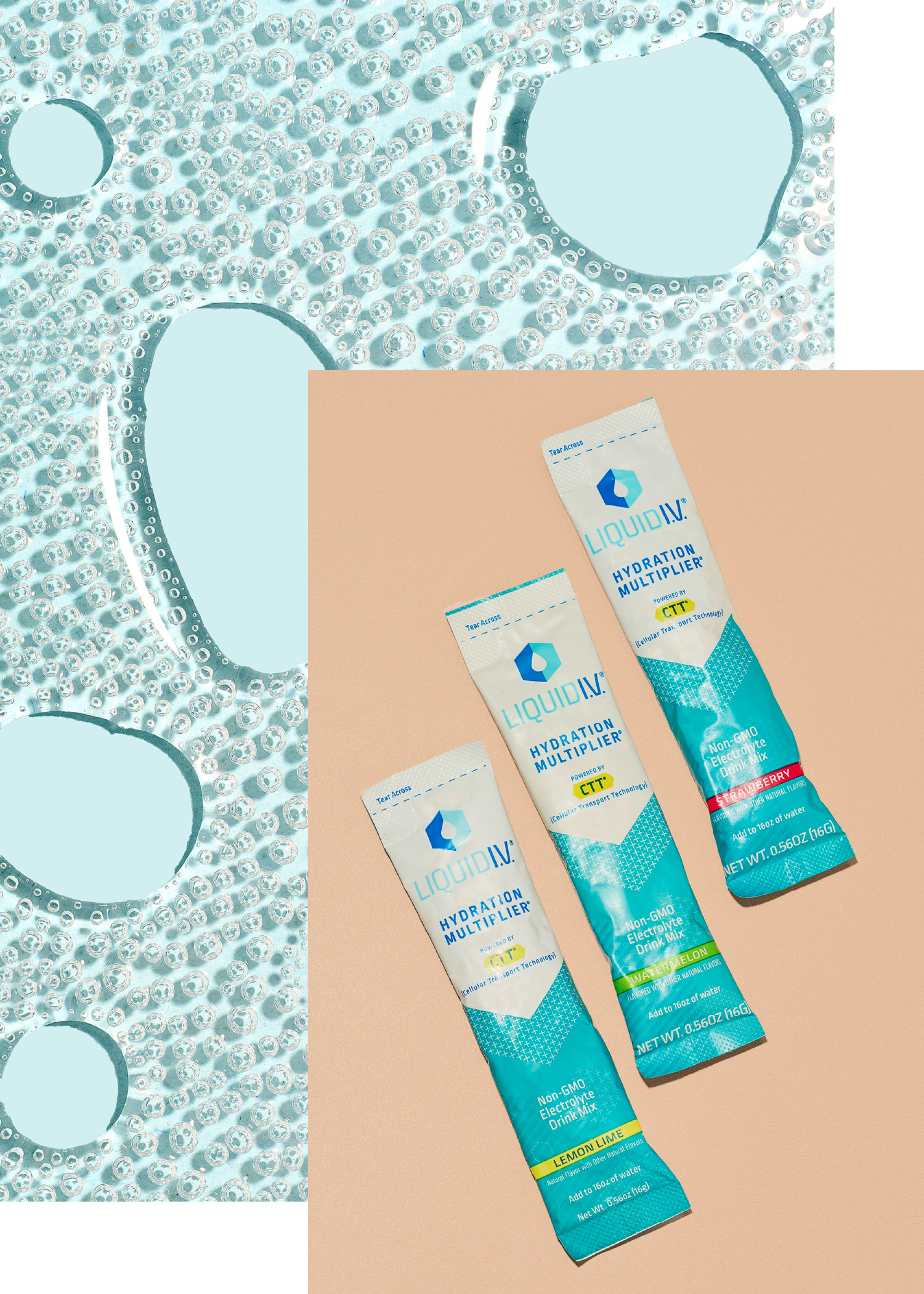
Liquid I.V.’s Hydration Multiplier.
(Rebecca Peloquin / For The Times)
Liquid I.V.’s Hydration Multiplier. “I would not have someone choose this to use every day because the added sugar is really too much — it’s the first and second listed ingredients. The other thing is: They boast, on their website, that the hydration multiplier has ‘3x the electrolytes of the leading sports drink.’ And that may be wonderful for someone who is doing very high-impact sports or who would require serious electrolytes replacement, but it’s not for the average person. Electrolytes balance out our cells, but if we have too much it throws off that balance and our cells can actually become oversaturated; it can make it harder for that cell to work and to get hydrated. This is why a more moderate amount of electrolytes may be a better option for athletes and heavy sweaters.”
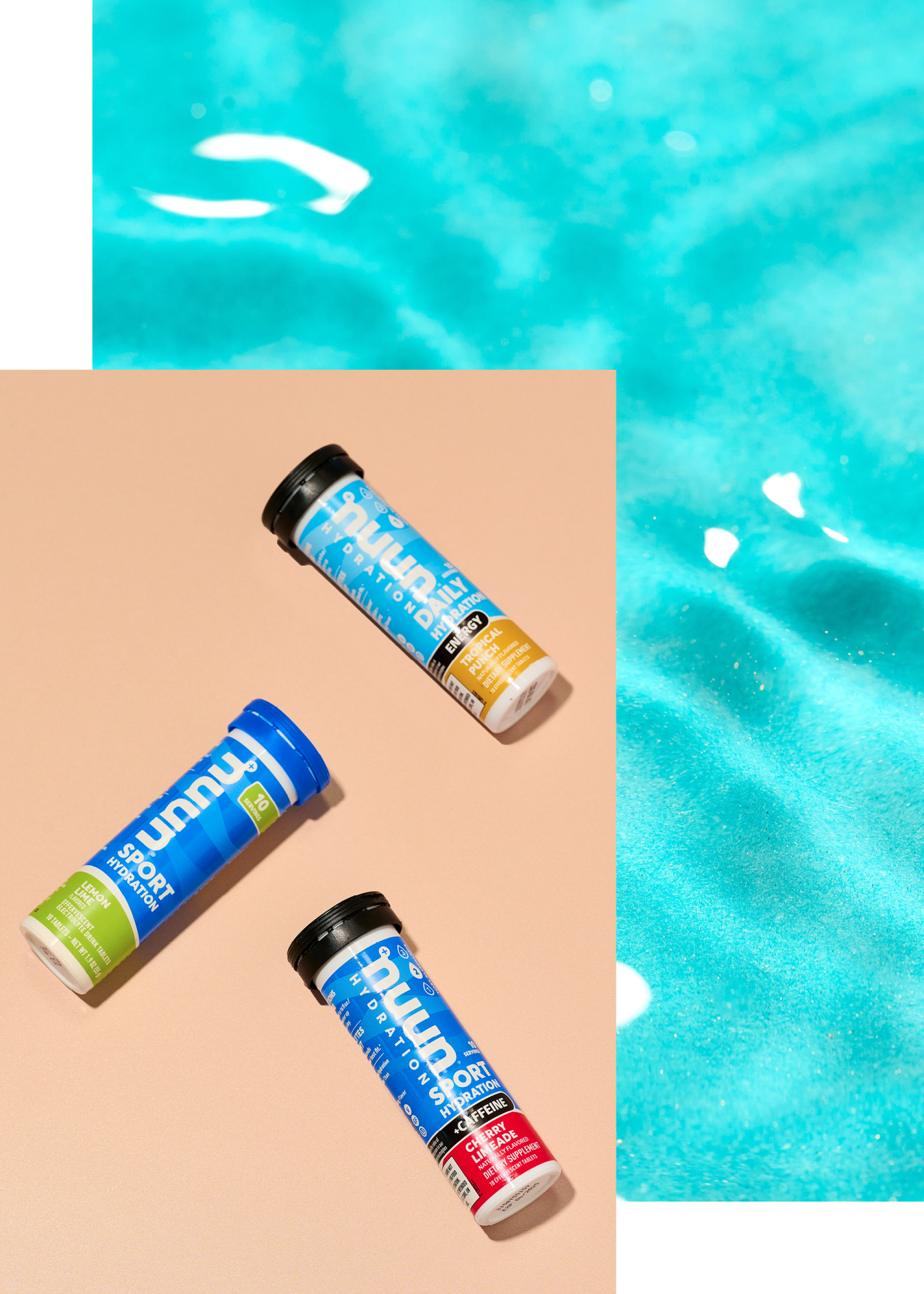
Nuun Sport Hydration.
(Rebecca Peloquin / For The Times)
Nuun Sport Hydration. “This one has a lower amount of added sugar. It might be for someone who wants to flavor their water — which, alone, would help increase fluid intake and therefore their hydration. It has electrolytes — your sodium, magnesium, potassium, chloride — but I would not have someone use this from a serious athletic standpoint because athletes need to not only replenish electrolytes lost but also sugars lost through expelling energy through exercise. Would it help hydrate cells? Sure, a little bit. But most people will end up drinking this because they like the flavors — and a lot of people like Nuun’s flavors.”
Cure Hydrating Electrolyte Drink Mix. “I like this one as a water flavoring — out of all of them, it was one of my favorites for that. But it’s not a true electrolyte blend. It includes sodium and Himalayan salt. But there’s no chloride and magnesium. This would not be a recommendation for gym-goers or athletes as it doesn’t contain any sugars, which are needed for adequate electrolyte and energy replenishment. It’s just a water flavoring because it contains lower amounts of sodium and potassium than other hydration alternatives. The ingredients are straightforward and clean — it has no added sugar, which is great — but it’s not in the same boat as an electrolyte product, even though it’s advertised as that.”

MIO Strawberry Watermelon Liquid Water Enhancer and MIO Sport Electrolytes + B Vitamins.
(Rebecca Peloquin / For The Times)
MIO Strawberry Watermelon Liquid Water Enhancer and MIO Sport Electrolytes + B Vitamins. “Out of all of these, MIO is probably one of my least favorites. The first is just a water flavoring, but all these additives — like sucrose acetate and Red 40 — they’re not good for you. Red 40 is a synthetic food dye. It’s considered safe, but a lot of people can have allergies causing headaches. It’s safe but not as good as Cure, which uses a natural additive like beet powder for color. Mio Sport uses Blue 1 for coloring, also a synthetic dye. It does contain B vitamins — B3, B6 and B12 — but not the complete B complex of eight B vitamins. It’s also not as strong of an electrolyte blend. Like Cure, it is missing your chloride and magnesium.”
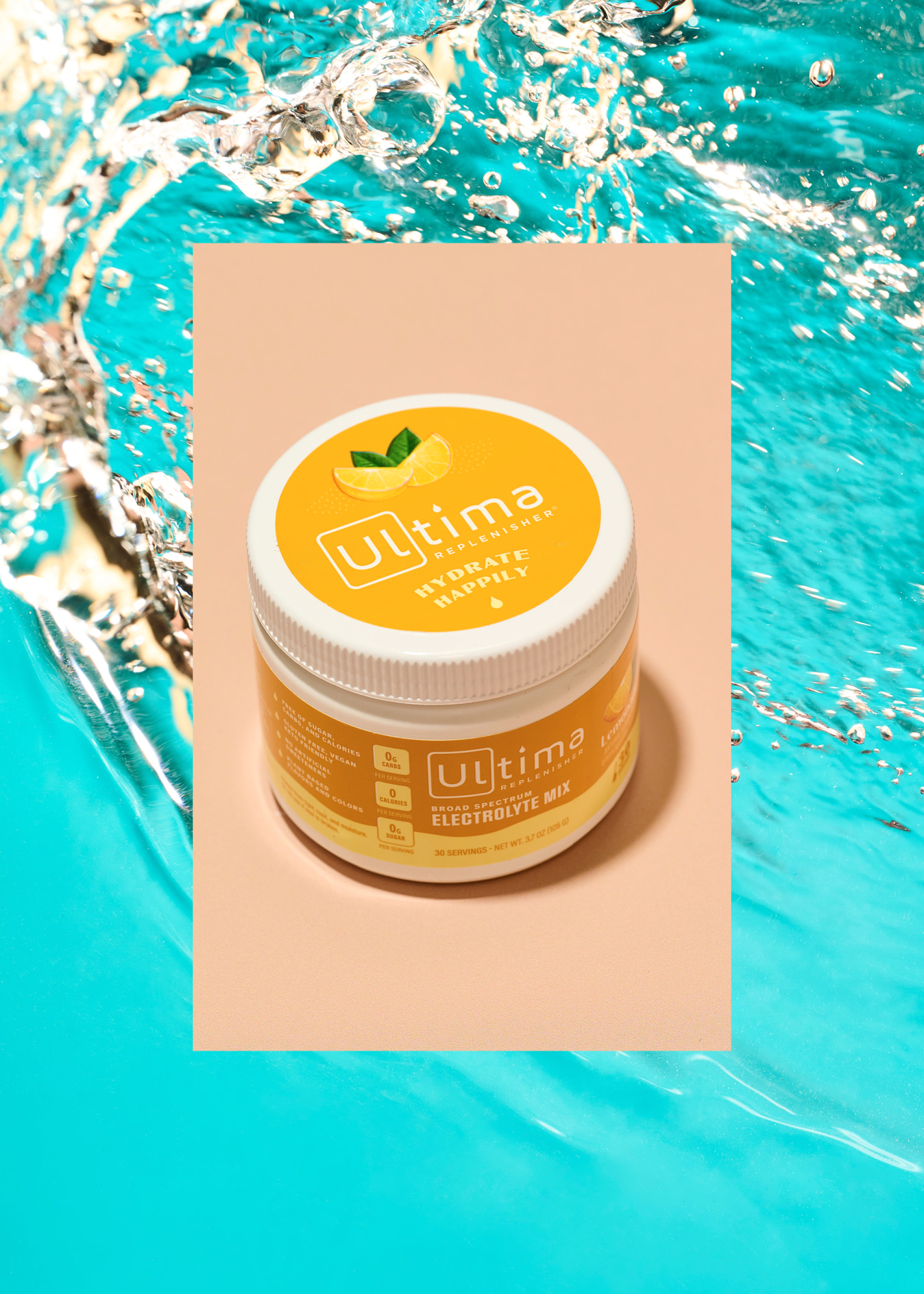
Ultima Replenisher, Broad Spectrum Electrolyte Mix.
(Rebecca Peloquin / For The Times)
Ultima Replenisher, Broad Spectrum Electrolyte Mix. “This one is OK from a standpoint that it’s going to flavor water and has the electrolytes that we’re looking for, like potassium, sodium, magnesium and chloride. But they’re relatively low amounts, containing one-sixth the amount of sodium in Nuun and Orgain; therefore, it is not for serious athletes.”
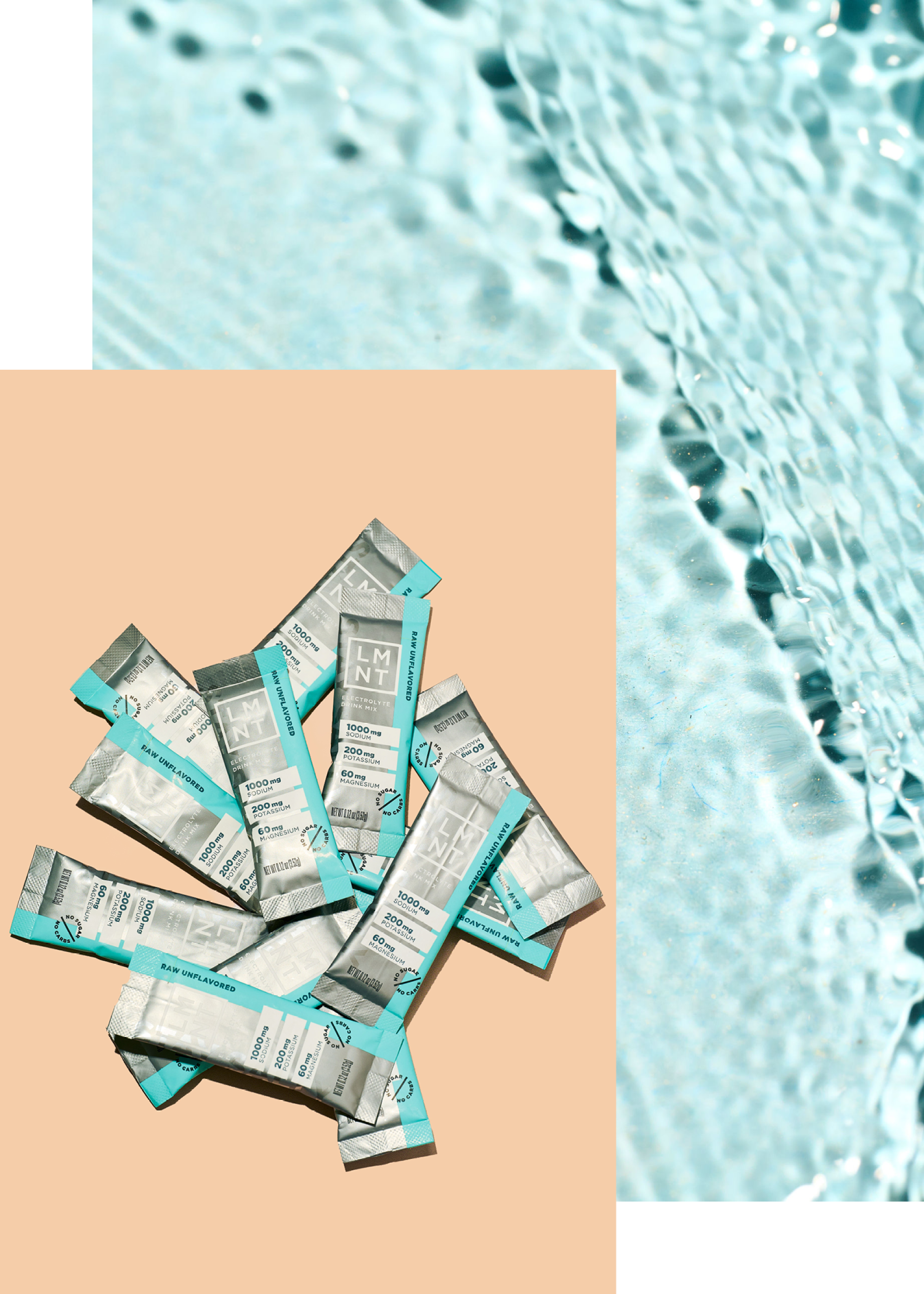
LMNT Zero-Sugar Electrolytes, Raw Unflavored.
(Rebecca Peloquin / For The Times)
LMNT Zero-Sugar Electrolytes, Raw Unflavored. “This is a clean, straightforward brand and zero calories — just your electrolytes. It isn’t flavored, though, so would not be an adequate water flavoring product. It would be good for a smoothie boost or if someone is on an elimination diet. But you’d need to add in a carbohydrate source, like fruit, for this to be more hydrating. It would have to be a whole lemon squeezed in. Or, if doing a smoothie, add a quarter cup of frozen berries to help absorb the electrolytes and help hydration.”
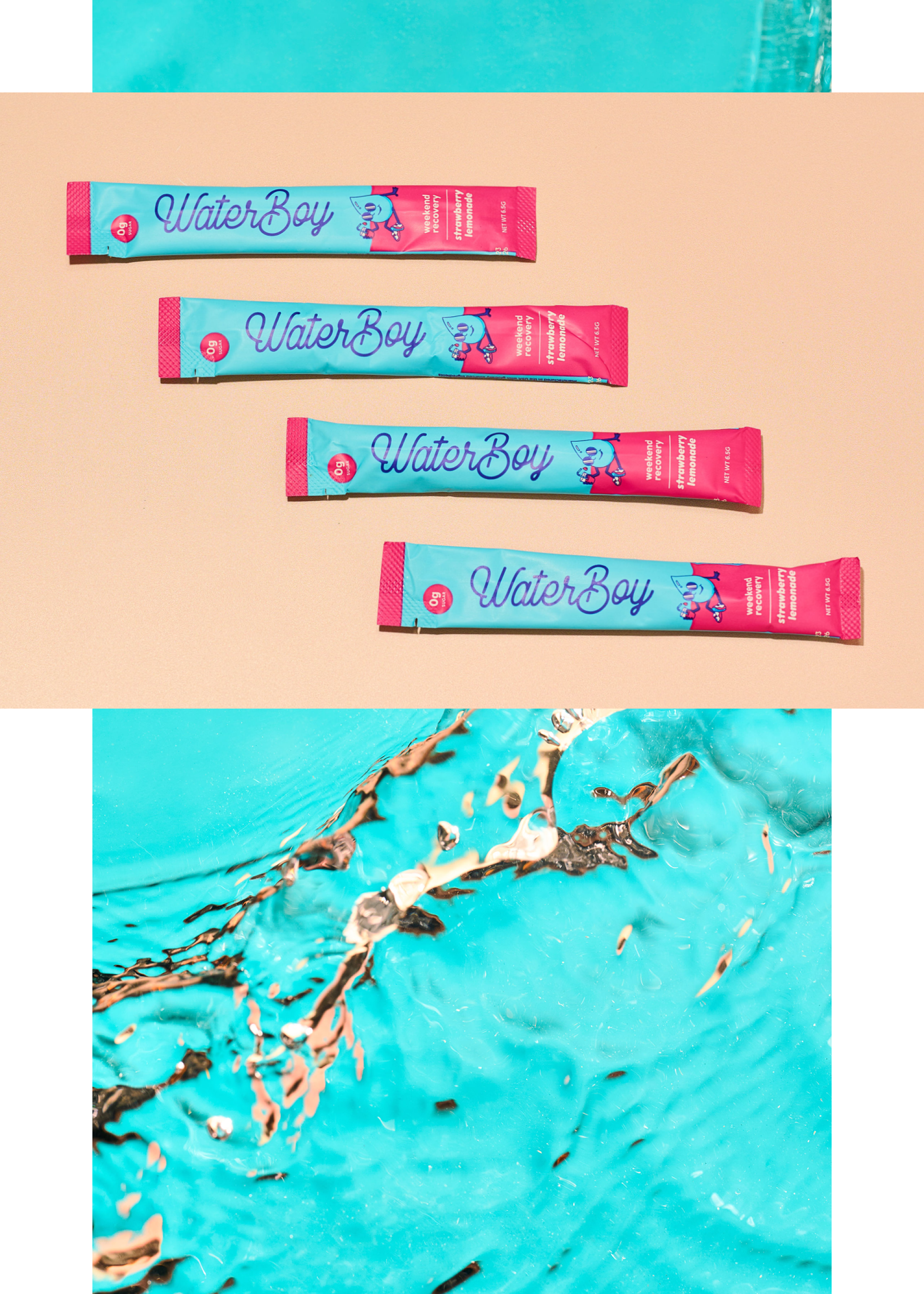
Water Boy Hydration Electrolyte Drink Mix for Weekend Recovery.
(Rebecca Peloquin / For The Times)
Water Boy Hydration Electrolyte Drink Mix for Weekend Recovery. “I was nervous about the high sodium content here. Sodium is the first ingredient and it’s almost 50% of your daily value. Compared to the other electrolytes — potassium, magnesium and chloride — the sodium is very high and the others are low. It’s a really odd balance. But it has zero sugar and it has only 1 gram of carbohydrates, which, from the ingredient list, I’m assuming is coming from a natural flavor or potentially the vegetable juice. But it’s not enough carbohydrates to balance out the high sodium content. This product is marketed as a ‘hangover’ cure because alcohol dehydrates the body; dehydration is a major contributor to hangover symptoms. Rehydrating the body using alkaline salt neutralizes the acid from alcohol and dehydration; however, this product would benefit from a better balance of all electrolytes, not just high amounts of sodium.”
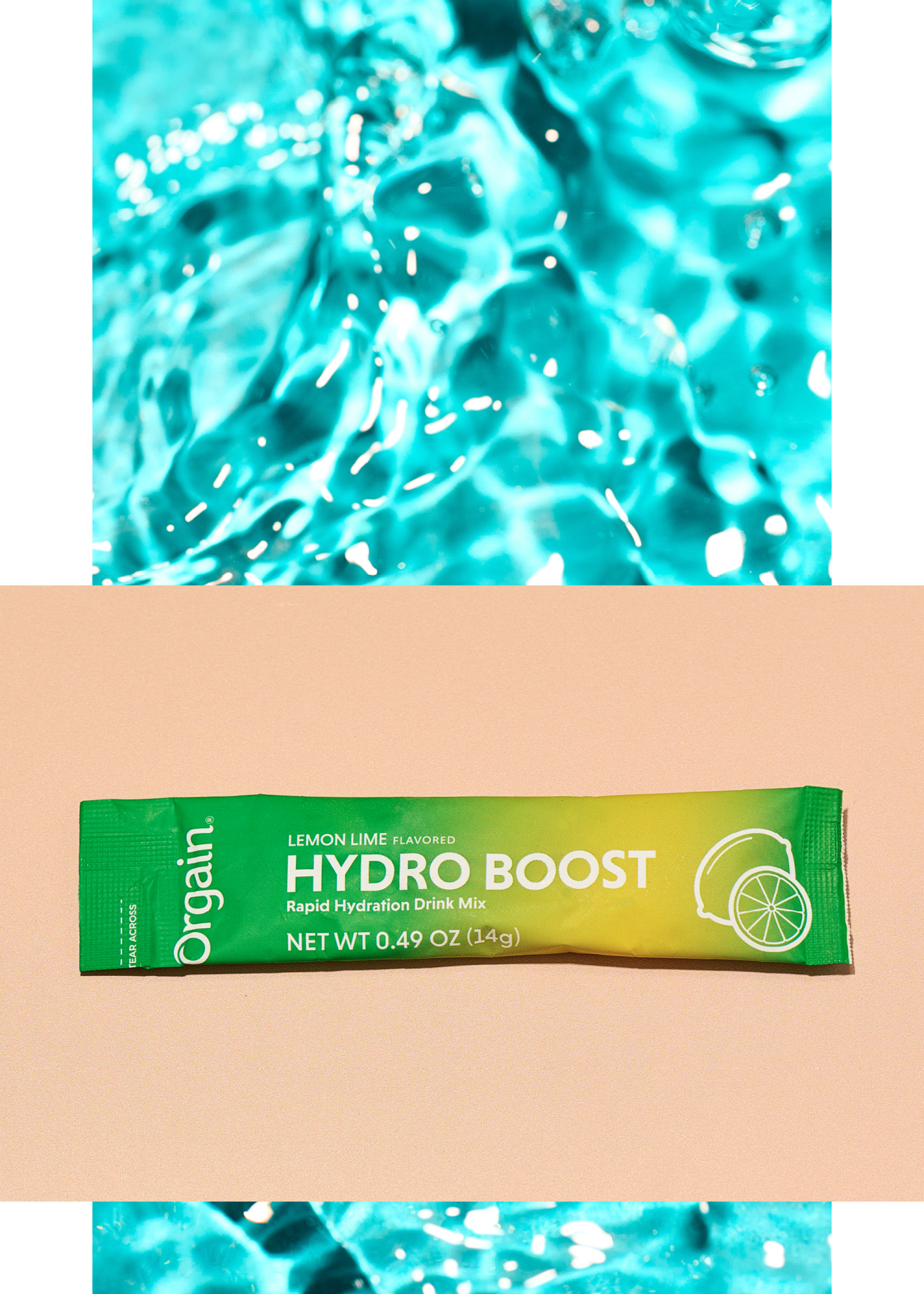
Orgain Hydro Boost, Rapid Hydration Drink Mix.
(Rebecca Peloquin / For The Times)
Orgain Hydro Boost, Rapid Hydration Drink Mix. “I like this one for athletes. Sugar is the first ingredient, but for athletes that would help absorb the electrolytes. And it would also replenish glucose storage in the muscles. And I like the balance of sodium and chloride here too. There’s also potassium. It’s missing magnesium, but because the sodium and chloride are so well balanced it outweighs that. There’s also no synthetic flavoring. It’s all things like organic lemon juice and organic monk fruit. It’s not for everyday use because of the high sugar content, but great for athletes for specific use like a long-intense bike training, high energy, intermittent workouts or an event, like a sports game.”

Science
With a nudge from industry, Congress takes aim at California recycling laws

The plastics industry is not happy with California. And it’s looking to friends in Congress to put the Golden State in its place.
California has not figured out how to reduce single-use plastic. But its efforts to do so have created a headache for the fossil fuel industry and plastic manufacturers. The two businesses are linked since most plastic is derived from oil or natural gas.
In December, a Republican congressman from Texas introduced a bill designed to preempt states — in particular, California — from imposing their own truth-in-labeling or recycling laws. The bill, called the Packaging and Claims Knowledge Act, calls for a national standard for environmental claims on packaging that companies would voluntarily adhere to.
“California’s policies have slowed American commerce long enough,” Rep. Randy Weber (R-Texas) said in a post on the social media platform X announcing the bill. “Not anymore.”
The legislation was written for American consumers, Weber said in a press release. Its purpose is to reduce a patchwork of state recycling and composting laws that only confuse people, he said, and make it hard for them to know which products are recyclable, compostable or destined for the landfill.
But it’s clear that California’s laws — such as Senate Bill 343, which requires that packaging meet certain recycling milestones in order to carry the chasing arrows recycling label — are the ones he and the industry have in mind.
“Packaging and labeling standards in the United States are increasingly influenced by state-level regulations, particularly those adopted in California,” Weber said in a statement. “Because of the size of California’s market, standards set by the state can have national implications for manufacturers, supply chains and consumers, even when companies operate primarily outside of California.”
It’s a departure from Weber’s usual stance on states’ rights, which he has supported in the past on topics such as marriage laws, abortion, border security and voting.
“We need to remember that the 13 Colonies and the 13 states created the federal government,” he said on Fox News in 2024, in an interview about the border. “The federal government did not create the states. … All rights go to the people in the state, the states and the people respectively.”
During the 2023-2024 campaign cycle, the oil and gas industry was Weber’s largest contributor, with more than $130,000 from companies such as Philips 66, the American Chemistry Council, Koch Inc. and Valero, according to OpenSecrets.org.
Weber did not respond to a request for comment. The bill has been referred to the House Energy and Commerce Committee.
Plastic and packaging companies and trade organizations such as Ameripen, Keurig, Dr Pepper, the Biodegradable Plastics Industry and the Plastics Industry Assn. have come out in support of the bill.
Other companies and trade groups that manufacture plastics that are banned in California — such as Dart, which produces polystyrene, and plastic bag manufacturers such as Amcor — support the bill. So do some who could potentially lose their recycling label because they’re not meeting California’s requirements. They include the Carton Council, which represents companies that make milk and other beverage containers.
“Plastic packaging is essential to modern life … yet companies and consumers are currently navigating a complex landscape of rules around recyclable, compostable, and reusable packaging claims,” Matt Seaholm, chief executive of the Plastics Industry Assn., said in a statement. The bill “would establish a clear national framework under the FTC, reducing uncertainty and supporting businesses operating across state lines.”
The law, if enacted, would require the Federal Trade Commission to work with third-party certifiers to determine the recyclability, compostability or reusability of a product or packaging material, and make the designation consistent across the country.
The law applies to all kinds of packaging, not just plastic.
Lauren Zuber, a spokeswoman for Ameripen — a packaging trade association — said in an email that the law doesn’t necessarily target California, but the Golden State has “created problematic labeling requirements” that “threaten to curtail recycling instead of encouraging it by confusing consumers.”
Ameripen helped draft the legislation.
Advocates focused on reducing waste say the bill is a free pass for the plastic industry to continue pushing plastic into the marketplace without considering where it ends up. They say the bill would gut consumer trust and make it harder for people to know whether the products they are dealing with are truly recyclable, compostable or reusable.
“California’s truth-in-advertising laws exist for a simple reason: People should be able to trust what companies tell them,” said Nick Lapis, director of advocacy for Californians Against Waste. “It’s not surprising that manufacturers of unrecyclable plastic want to weaken those rules, but it’s pretty astonishing that some members of Congress think their constituents want to be misled.”
If the bill were adopted, it would “punish the companies that have done the right thing by investing in real solutions.”
“At the end of the day, a product isn’t recyclable if it doesn’t get recycled, and it isn’t compostable if it doesn’t get composted. Deception is never in the public interest,” he said.
On Friday, California’s Atty. Gen. Rob Bonta announced settlements totaling $3.35 million with three major plastic bag producers for violating state law regarding deceptive marketing of non-recyclable bags. The settlement follows a similar one in October with five other plastic bag manufacturers.
Plastic debris and waste is a growing problem in California and across the world. Plastic bags clog streams and injure and kill marine mammals and wildlife. Plastic breaks down into microplastics, which have been found in just about every human tissue sampled, including from the brain, testicles and heart. They’ve also been discovered in air, sludge, dirt, dust and drinking water.
Science
‘Largest outbreak that we’ve seen in California.’ Death cap mushrooms linked to deaths, hospitalizations

An exceptionally wet December has contributed to an abundance of death cap mushrooms, or Amanita phalloides, on the Central Coast and Northern California, causing what officials describe as an unprecedented outbreak of severe illness and death among people who consume the fungi.
Public health officials are issuing a second warning this winter, this time urging the public against foraging for wild mushrooms, noting that many people have mistakenly eaten the death cap that, when consumed, can cause severe liver damage and in some causes death.
In the last 26 years, “we have not had a season as deadly as this season both in terms of the total numbers of cases as well as deaths and liver transplants,” said Craig Smollin, medical director of the San Francisco division of the California Poison Control System.
“I believe this is probably the largest outbreak that we’ve seen in California, ever.”
Many of the cases, officials say, have involved people from Mexico and elsewhere for whom the death cap resembles an edible mushroom in their home countries.
The California Department of Public health reported 35 death cap-related illness, including three fatalities and three liver transplants between Nov. 18 and Jan. 6. Affected people were between the ages of 19 months old and 67 years old.
In a typical year, the California Poison Control Center may receive up to five cases of poisonous mushroom-related illness, according to authorities.
The last major outbreak of mushroom-related illness in California occurred in 2016 with 14 reported cases and while there were no deaths, three people required liver transplants and one child suffered a “permanent neurologic impairment.”
The death cap is the world’s most poisonous mushroom, responsible for 90% of mushroom-related fatalities.
Where the death-cap outbreak is concentrated
When state public health officials first warned of the dangers of the death-cap mushroom in December, significant clusters of reported illness occurred in Monterey and the San Francisco bay areas.
Reported hospitalizations have since grown to include Alameda, Contra Costa, Monterey, San Francisco, San Luis Obispo, San Mateo, Santa Clara, Santa Cruz and Sonoma counties.
Death cap mushrooms are known to sprout across the state of California but they thrive in shady, humid or moist environments under live oak and cultivated cork oak trees.
Death cap mushrooms bloom particularly well after the fall and winter rains. Once they sprout, its tall and graceful characteristics are very conspicuous and catch people’s eye, said David Campbell, an expert on mushroom consumption or a mycophagist.
Who is mistakenly eating the death cap
People who have accidentally consumed the death cap were usually foraging for mushrooms in the wilderness, either alone or with a group, officials say.
Among the affected are monolingual speakers of Spanish, Chinese, Mandarin and Mixteco as well as foragers who may confuse the death cap mushroom for edible fungi from their native countries, according to experts.
“So they have a false sense of security in their knowledge, thinking they know what they’re doing but that only applies to where they’re from,” Campbell said.
“We’re seeing that a number of patients do seem to have a Hispanic background,” said Dr. Rita Nguyen, assistant state public health officer at the California Department of Public Health.
In November, a Salinas family said they went on a hike in their community and found the death cap which looked similar to an edible mushroom they would forage for in their hometown in Oaxaca, KSBW Action News reported.
Laura Marcelino and Carlos Diaz took the mushrooms home, cooked them and ate them — their children did not. They both threw up, had diarrhea for an entire day and were later hospitalized, KSBW Action News reported. Marcelino’s condition improved but Diaz’s health declined exponentially to the point that he fell into a coma and was put on a list to receive a liver transplant, according to news reports.
Why people are mistakenly eating death cap mushrooms
The three most deadly mushrooms in California include the death cap, destroying angel (Amanita ocreata) and deadly Galerina (Galerina marginata), according to the Bay Area Mycological Society.
The death cap mushroom has a dome-shape smooth cap with olive or yellowish-green tones. On the underside of its cap are white gills and spores.
It can be confused with the mushroom species Volvariella, which is edible.
These mushrooms appear similar because they have a volva, a cup-like structure at the base of the mushroom’s stem, and are white-ish, but lack one important key characteristic annulus, or ring, around its stem, said Ari Jumpponen, Kansas State University distinguished professor of biology.
Jumpponen said some Volvariella species can be found in Oaxaca.
What symptoms can you expect after eating a death cap?
No amount of death cap is safe to consume.
“I also want to just stress that there’s nothing, there’s no cooking of the mushroom or freezing of the mushroom that would inactivate the toxin,” Smollin said.
The poisonous toxins from the death cap can result in a delayed gastrointestinal symptoms that may not appear until 6 to 24 hours after eating it.
Some of the early symptoms that can go away within a day include:
- Nausea
- Vomiting
- Diarrhea
- Abdominal pain
- Drop in blood pressure
- Fatigue
- Confusion
Mild symptoms may only be the beginning of a more severe reaction.
Severe symptoms can develop within 48 to 96 hours, include progressive liver damage and, in some cases, full liver failure and potentially death, Smollin said.
If you’ve eaten a foraged mushroom and start to exhibit any adverse symptoms, call California’s poison control hotline at 1-800-222-1222 for free, confidential expert advice in multiple languages. If you suspect mushroom poisoning, call 911.
Science
Leaked memo reveals California debated cutting wildfire soil testing before disaster chief’s exit

California Gov. Gavin Newsom’s disaster chief quietly retired in late December amid criticism over the state’s indecisive stance on whether soil testing was necessary to protect survivors of the Eaton and Palisades fires.
One year ago, Nancy Ward, then the director of the California Governor’s Office of Emergency Services (Cal OES), petitioned the Federal Emergency Management Agency to spearhead the cleanup of toxic ash and fire debris cloaking more than 12,000 homes across Los Angeles County.
Although Ward’s decision ensured the federal government would assume the bulk of disaster costs, it came with a major trade off. FEMA was unwilling to pay for soil sampling to confirm these homes weren’t still heavily contaminated with toxic substances after the cleanup — testing that California state agencies have typically done following similar fires in the past.
Following intense backlash from fire survivors and California lawmakers, Ward pleaded with FEMA to reconsider its soil-testing stance, writing in a Feb. 19 letter that it is “critical to protect public health” and “ensure that survivors can safely return to their homes.” Her request was denied.
However, in October, Cal OES — under Ward’s leadership — privately considered discontinuing state funding for soil testing in the aftermath of future wildfires, according to a confidential, internal draft memo obtained by the Los Angeles Times.
The Times requested an interview with Ward, and sent questions to her office asking about her initial decision to forgo soil testing and for clarity on the future of state’s fire recovery policy. Ward declined the request; The Times later published an article on Dec. 29 about allegations that federal contractors illegally dumped toxic ash and misused contaminated soil in breach of state policy.
Ward, who served as Cal OES director for three years, retired on Dec. 30; her deputy director, Christina Curry, stepped into the role as the interim chief. Ward also did not respond to several requests for comment for this article.
Ward was the first woman to serve as Cal OES director. She had also previously served as a FEMA regional administrator, overseeing federal disaster response in the Southwest and Pacific Islands from 2006 to 2014.
A Cal OES spokesperson said Ward’s retirement had been planned well in advance.
“Director Nancy Ward has been a steady hand and a compassionate leader through some of California’s largest disasters,” the spokesperson said. “Her decades of service have made our state stronger, safer, and more resilient. The Governor is deeply grateful for her dedication and wishes her the very best in retirement.”
The internal memo obtained by The Times was written by Ward’s assistant director, and titled: “Should the state continue to pay for soil testing as part of Private Property Debris Removal (PPDR) programs? ”
It laid out three possible answers: The state could keep funding soil testing after future wildfires; the state could defer soil testing decisions to the affected counties with the possibility of reimbursing them; or the state could stop paying for soil testing entirely.
A Cal OES spokesperson said the memo was only a draft and did not represent a policy change. “The state’s position on soil testing remains unchanged,” the spokesperson said. “California is committed to advocating for the safe, timely removal of wildfire debris. Protecting the public health and well-being of impacted communities remains the state’s foremost priority.”
The primary reason for soil testing is to prevent harmful exposures to toxic metals, such as brain-damaging lead or cancer-causing arsenic. Since 2007, comprehensive soil testing has been conducted after 64 wildfire cleanups in California, according to the memo. When soil contamination still exceeded state benchmarks after the initial cleanup, the state government redeployed cleanup workers to remove more dirt and then retest the properties.
This approach, the memo said, was critical in identifying harmful substances that “pose exposure hazards via ingestion, inhalation of dust, or through garden/food production.” Soil testing “helps ensure the safety” of children, seniors, pregnant women and people with health issues who are “more vulnerable to soilborne toxins.”
“The State has a long precedent of conducting or paying for soil testing,” the Cal OES assistant director wrote in the memo. “Pivoting from this would be a significant policy change.”
The memo cites a report from CalRecycle, the agency that has historically carried out state-led fire cleanups, that stresses the importance of the current practice to public health.
“Soil contamination after a wildfire is an invisible threat,” wrote a CalRecycle official. “If not properly cleaned and remediated in a methodical way, property owners may encounter additional hurdles during the rebuilding process and suffer additional trauma.”
“Soil sampling,” the official adds, “is the metric by which Recyclable demonstrates that debris removal operations have successfully remediated the post-disaster threat to public health and the environment.”
However, such soil testing and additional cleanup prolongs the cleanup timeline and can make it more expensive. The memo cites cost estimates from CalRecycle which show that soil testing and additional cleanup work usually costs some $4,000 to $6,000 per parcel, representing 3% to 6% of overall debris removal costs.
The state cost projections align with those made by independent environmental experts. Andrews Whelton, a Purdue University professor who researches natural disasters, estimated that soil testing and further remediation for the Eaton and Palisades fire would cost between $40 million to $70 million.
All told, the CalRecycle report states the usual soil-testing process has been a “relatively low-cost step” to safeguard public health.
Further, although soil testing may add some cost, when it’s taken as a proactive measure, it can save money down the road.
Forgoing soil testing and evidence-backed remediation can generate uncertainty about toxic contamination, which in turn could lower the value of homes in Altadena and Pacific Palisades, Whelton said. What’s more, the property owner may be liable for soil contamination if they fail to disclose environmental risks when selling or leasing.
The internal CalOES memo alludes to this give and take: “Funds saved initially by skipping testing may be outweighed by later unseen costs, for example, reinvesting in remediation, addressing community complaints, litigation, or cleanup failure.”
The U.S. Army Corps of Engineers has fielded over 1,100 complaints filed by property owners affected by the Eaton and Palisades fires — over 20% of which were related to the quality of work. According to internal reports obtained by The Times, federal cleanup repeatedly deviated from cleanup protocols, likely spreading contamination in the process.
Since then, FEMA officials have backed down from their hard-line stance against paying for post-fire soil testing in California in an attempt to shore up public confidence in the federal cleanup.
The U.S. Environmental Protection Agency announced this week that FEMA will conduct a limited lead-testing program in the Eaton fire burn scar that is intended to “confirm the effectiveness of cleanup methods,” according to an EPA spokesperson. The initiative has already come under the scrutiny of environmental experts who say it lacks the rigor of California’s soil testing regimen.
It remains unclear if California will continue to implement soil-testing safeguards that made the state a national leader in fire recovery. Though state officials say these will remain unchanged, there is no legal mandate to follow these procedures.
The internal CalOES memo circulated under Ward’s leadership has only added to the cloud of uncertainty.
One thing is clear: It’s a moot point for survivors of the Eaton and Palisades fire.
As state and federal officials debated the value of soil testing, most Altadena and Pacific Palisades residents have been left to investigate the extent of environmental fallout on their own.
-

 Montana1 week ago
Montana1 week agoService door of Crans-Montana bar where 40 died in fire was locked from inside, owner says
-

 Delaware1 week ago
Delaware1 week agoMERR responds to dead humpback whale washed up near Bethany Beach
-

 Dallas, TX1 week ago
Dallas, TX1 week agoAnti-ICE protest outside Dallas City Hall follows deadly shooting in Minneapolis
-

 Virginia1 week ago
Virginia1 week agoVirginia Tech gains commitment from ACC transfer QB
-

 Montana1 week ago
Montana1 week ago‘It was apocalyptic’, woman tells Crans-Montana memorial service, as bar owner detained
-

 Minnesota1 week ago
Minnesota1 week agoICE arrests in Minnesota surge include numerous convicted child rapists, killers
-

 Oklahoma6 days ago
Oklahoma6 days agoMissing 12-year-old Oklahoma boy found safe
-

 Lifestyle3 days ago
Lifestyle3 days agoJulio Iglesias accused of sexual assault as Spanish prosecutors study the allegations




















